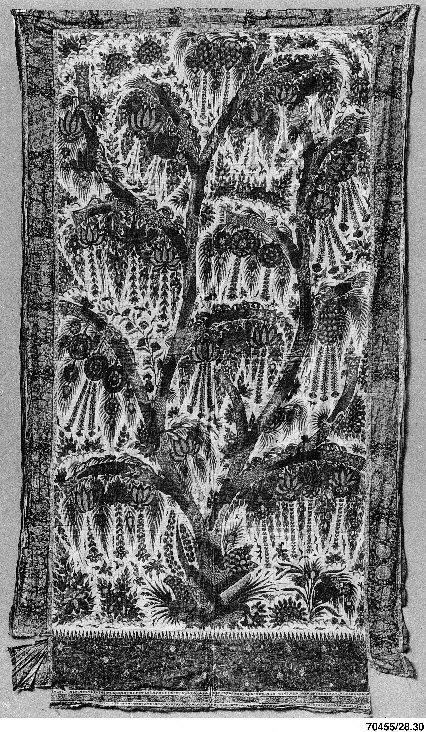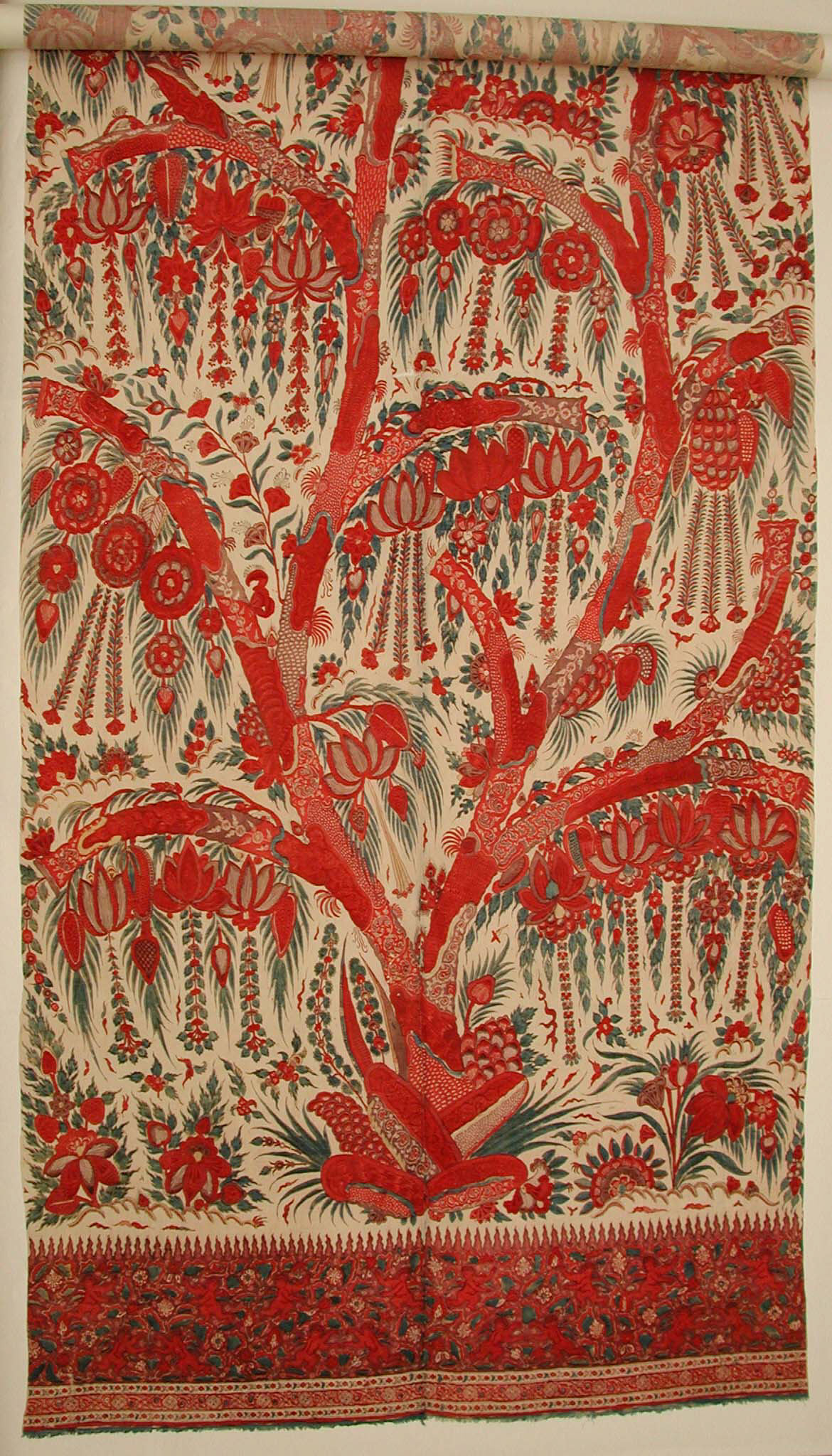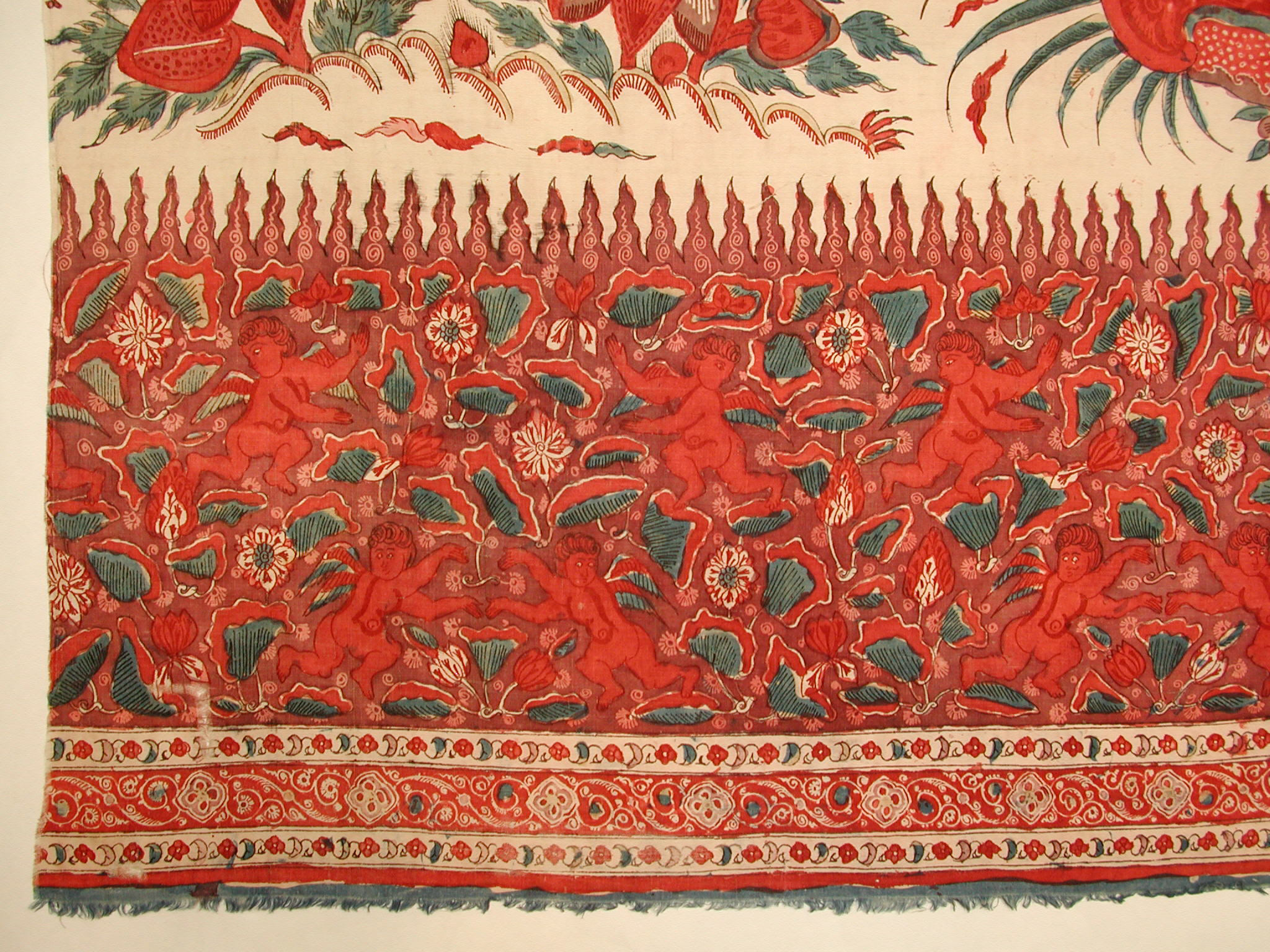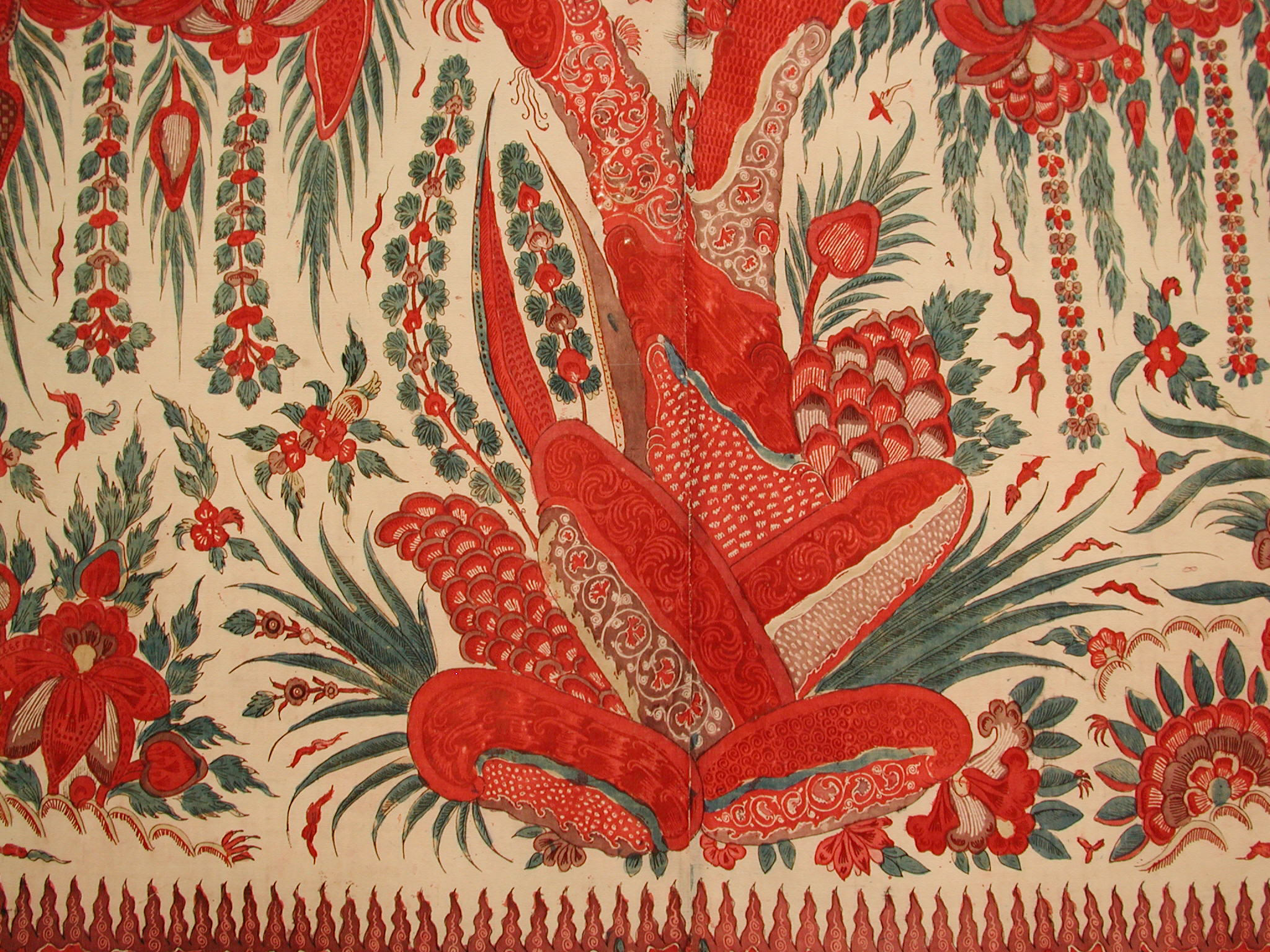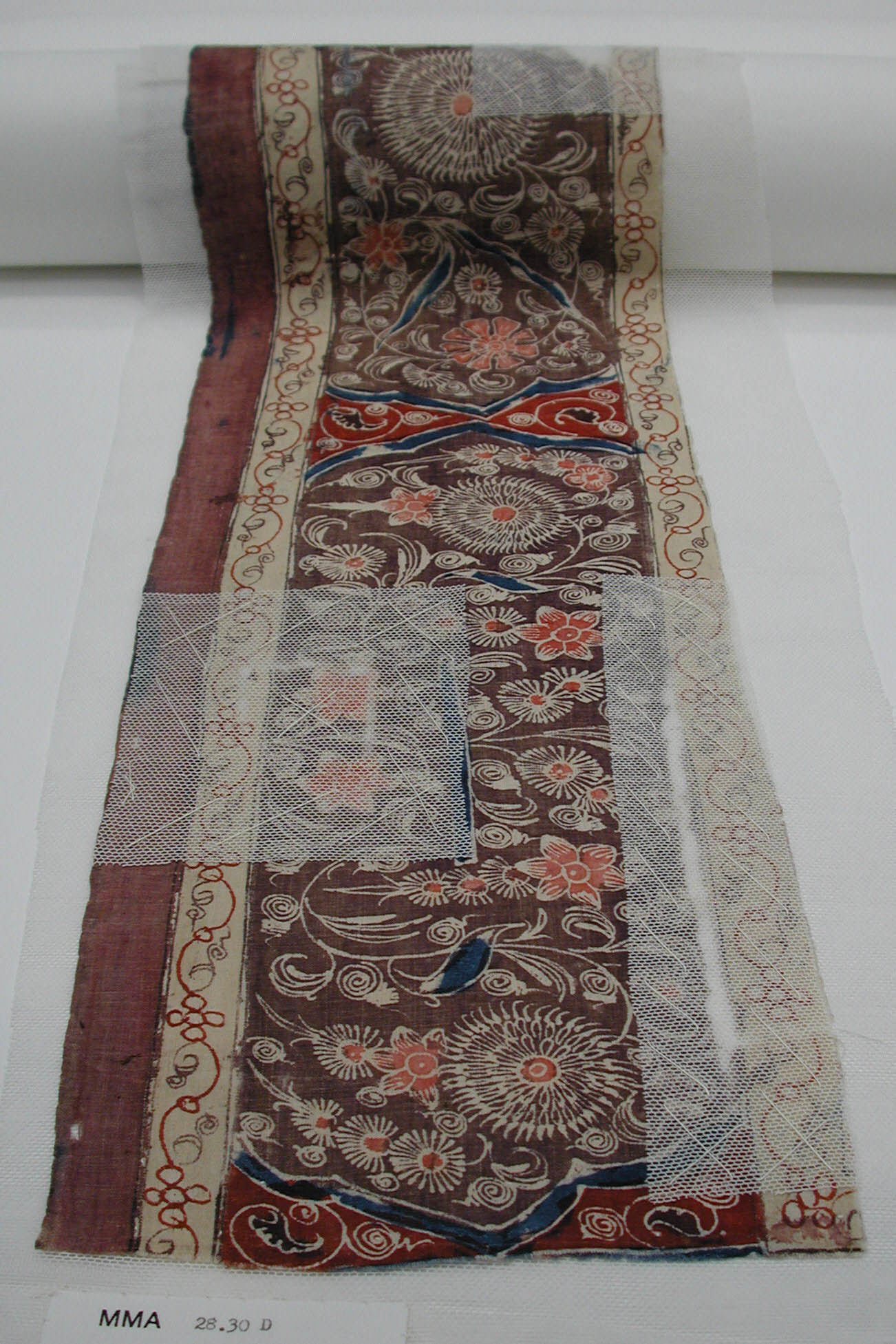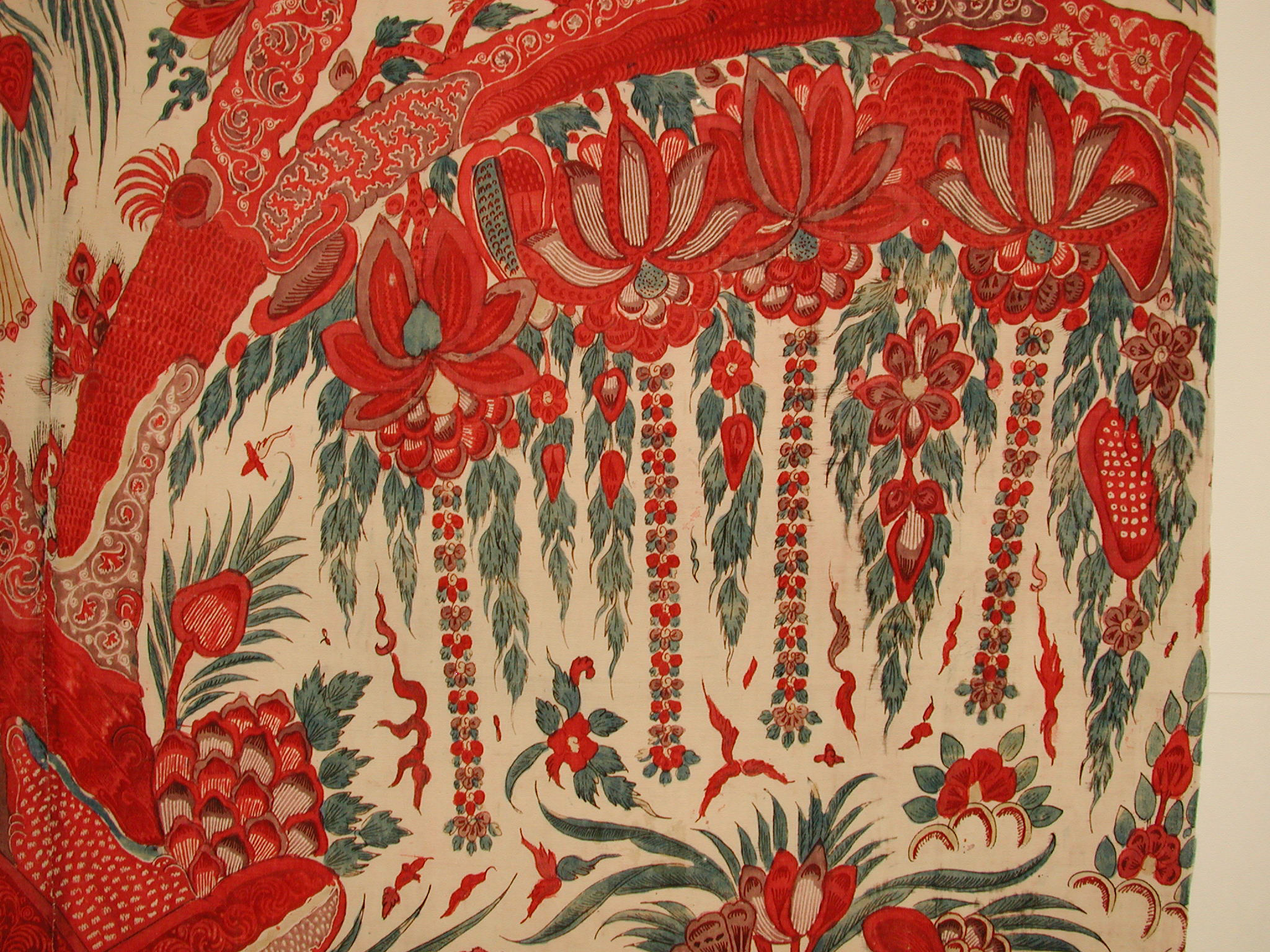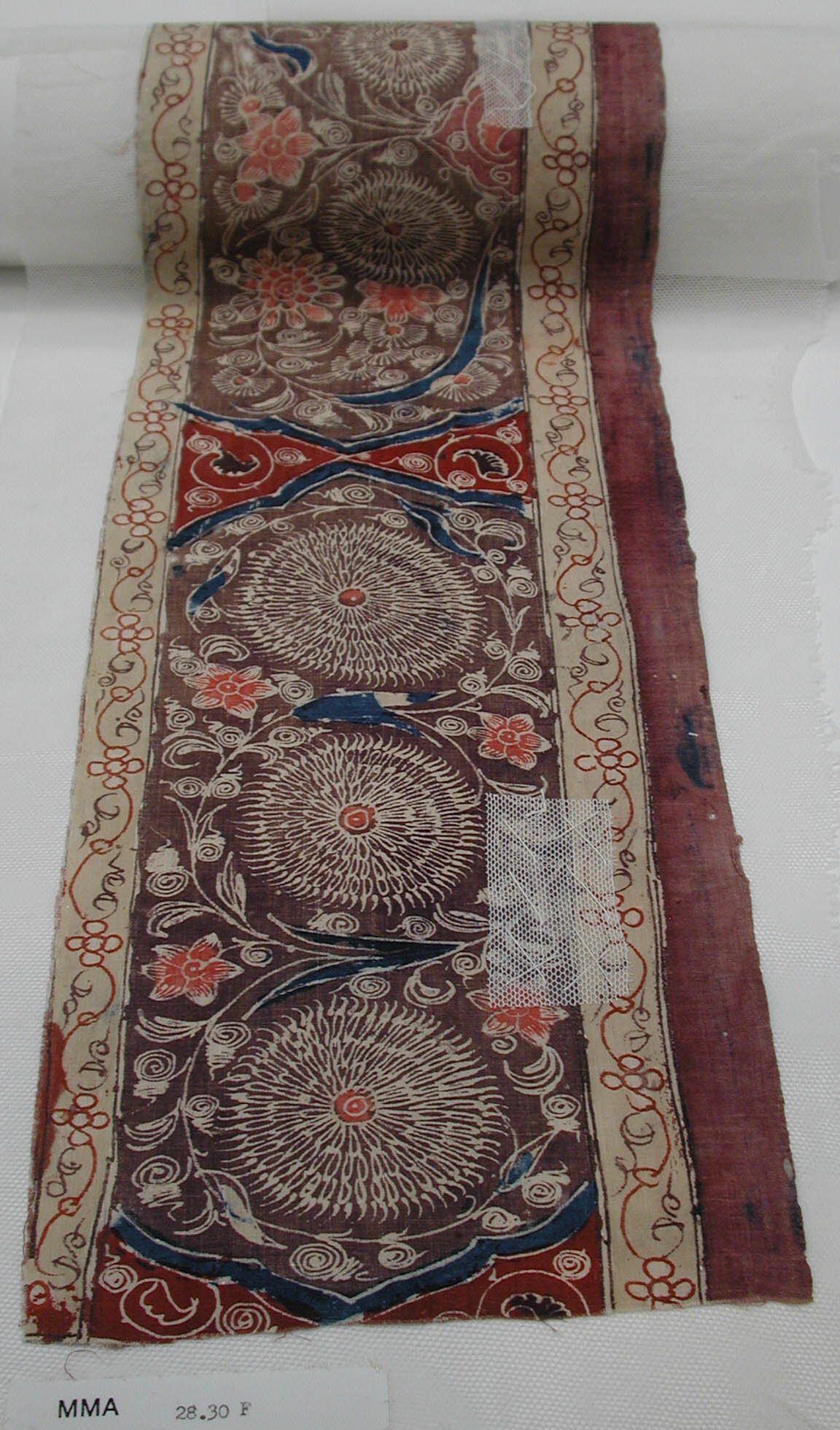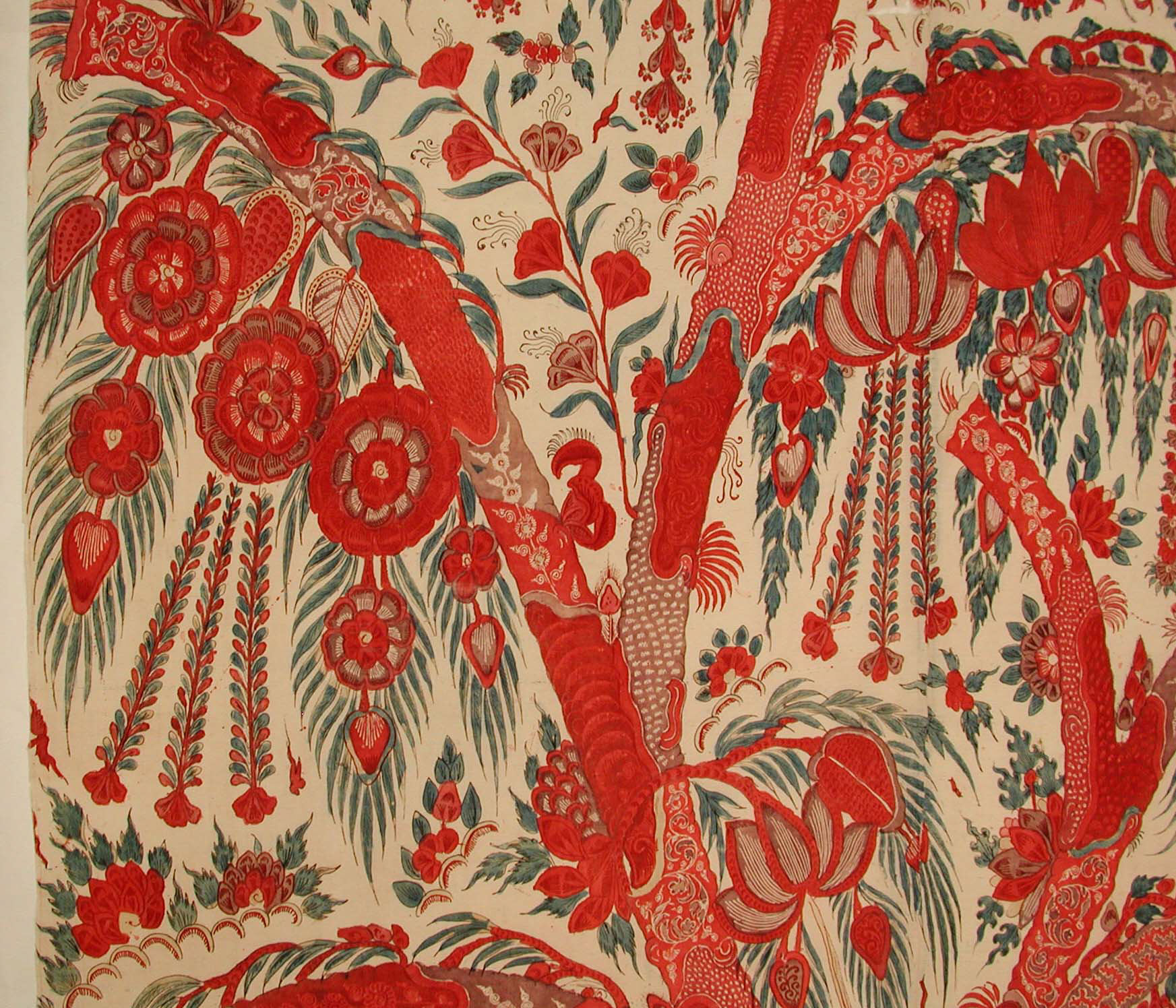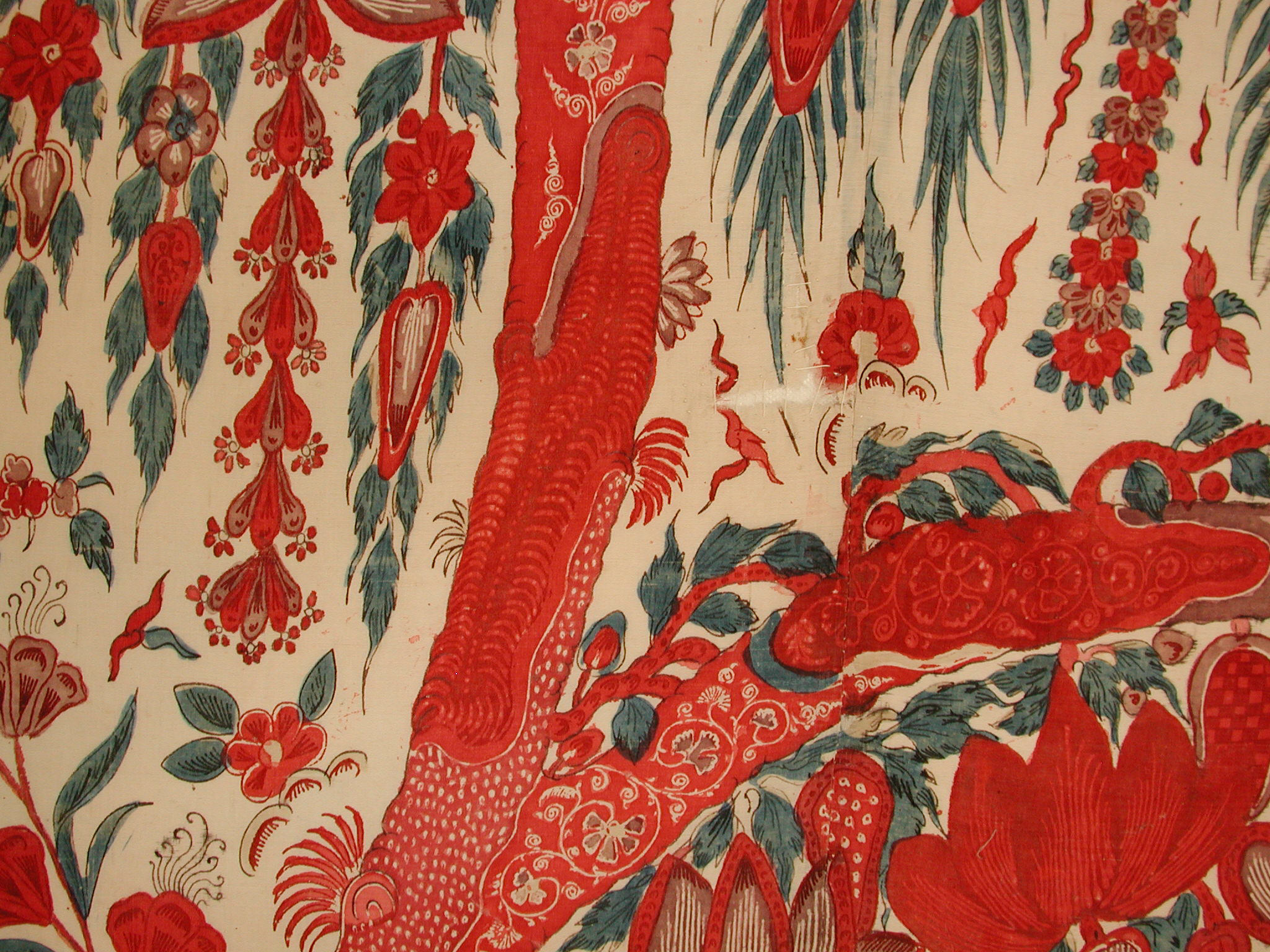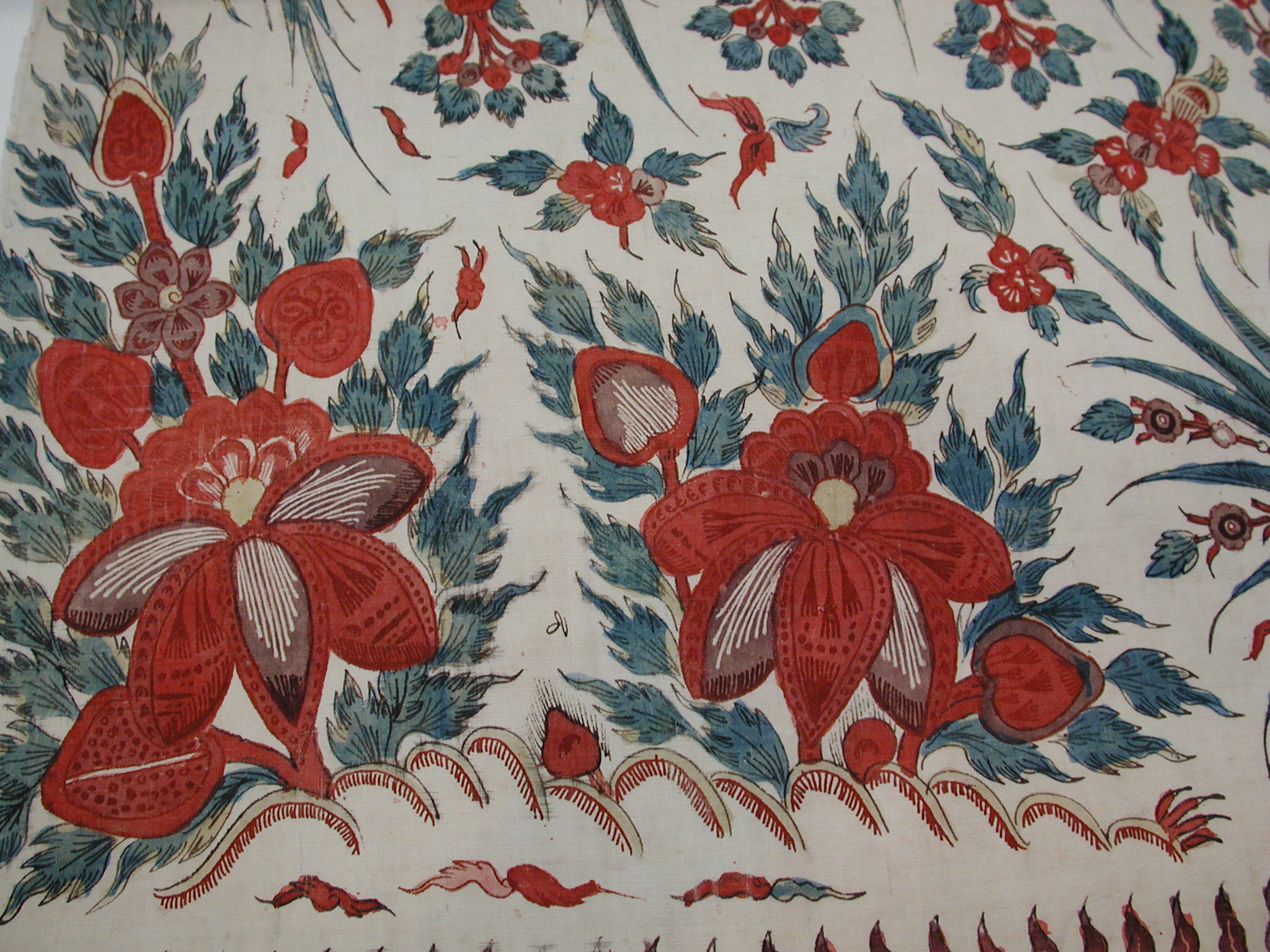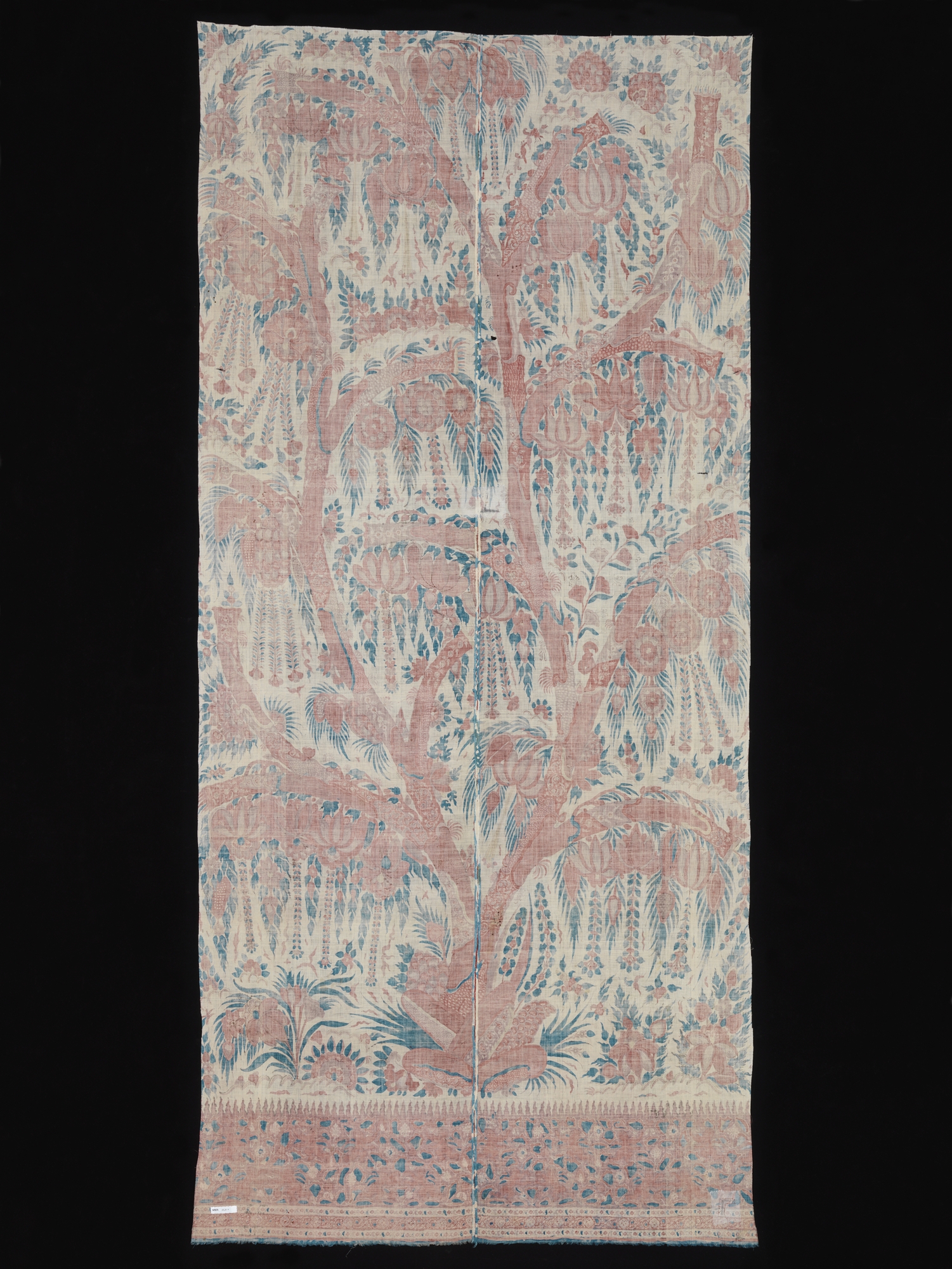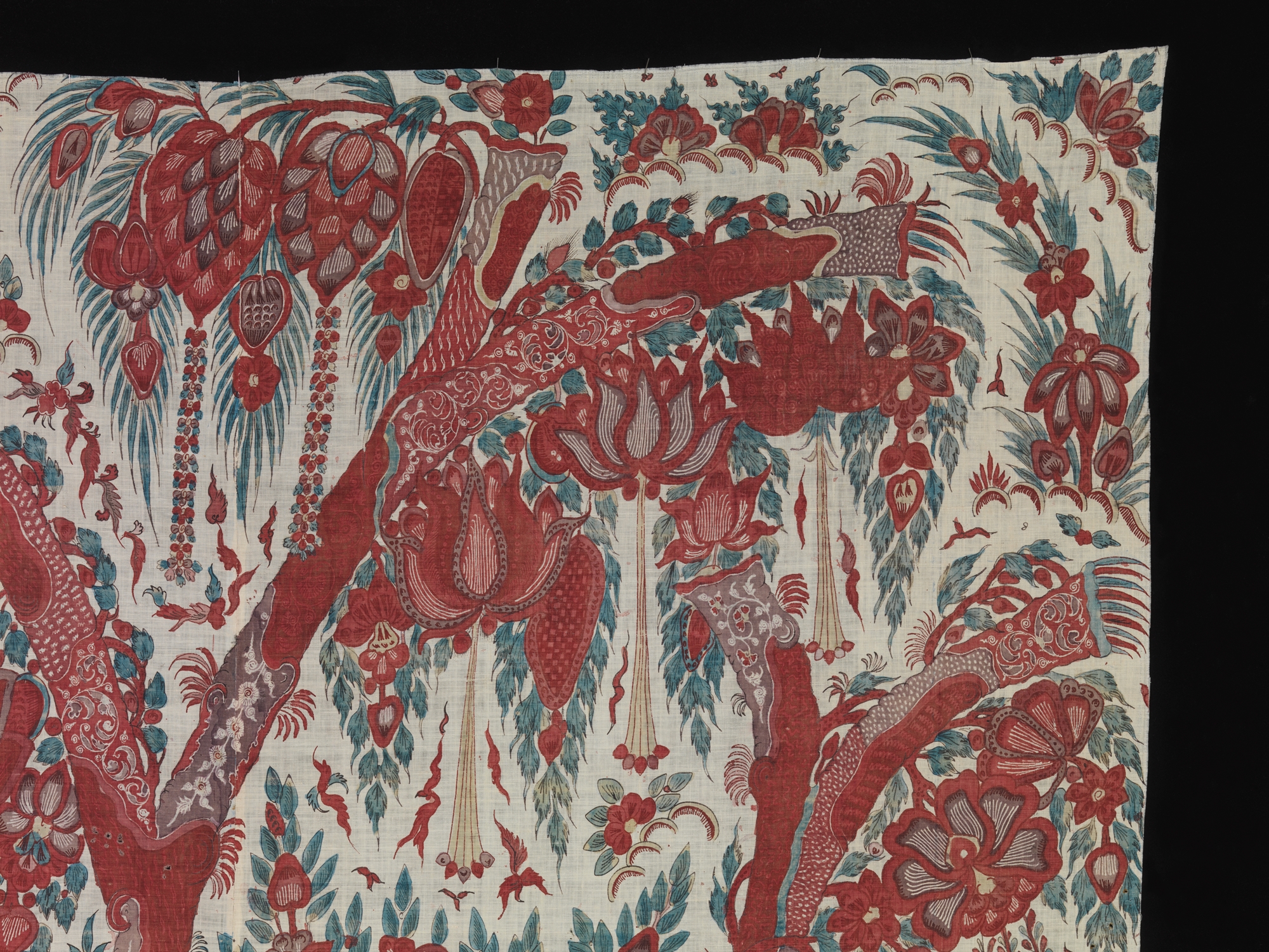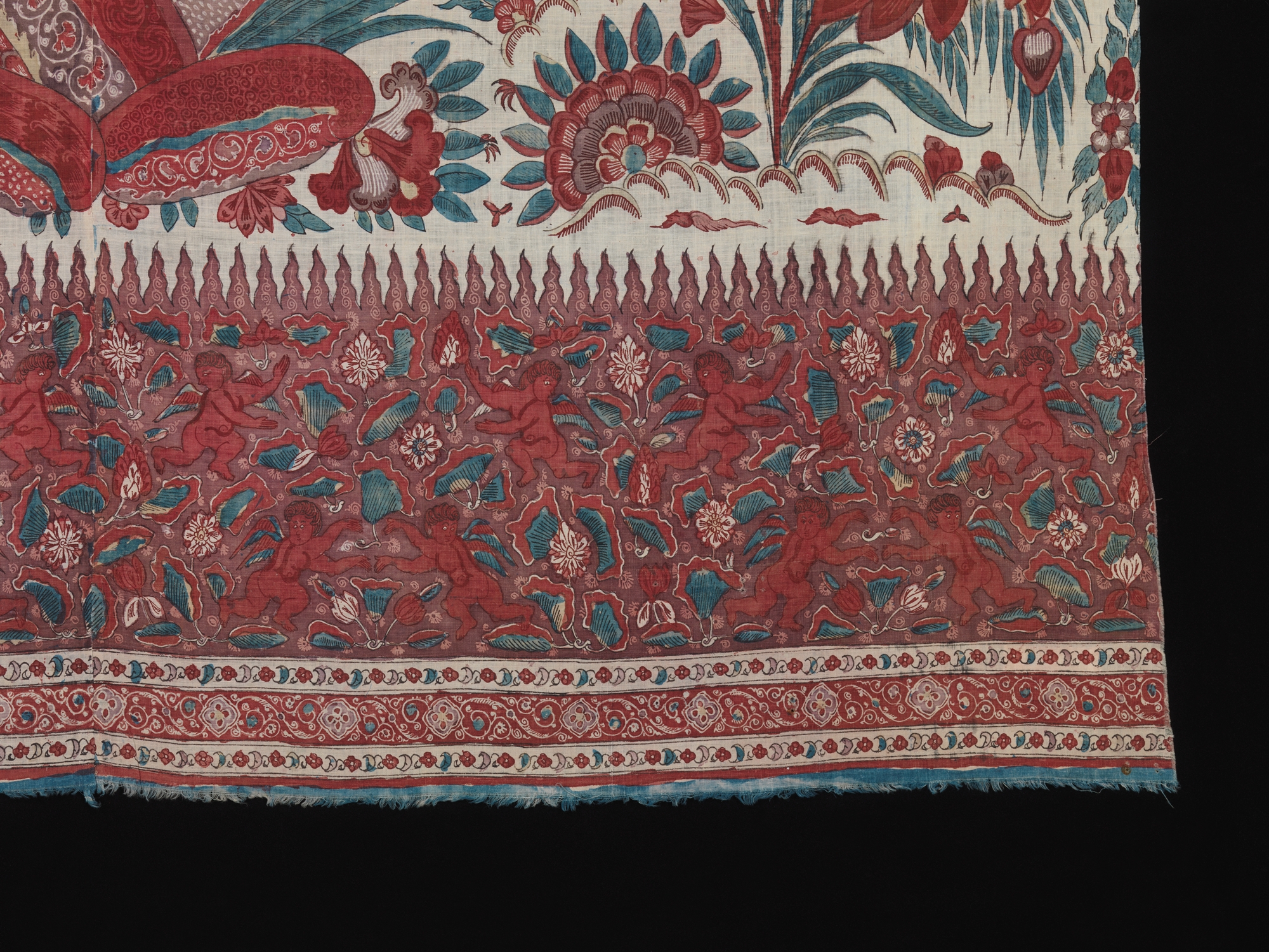Palampore
Not on view
This type of dyed cloth, known as a palampore (from palangposh, the Hindi term for bedcover), was made in abundance in India for foreign markets in the late seventeenth and eighteenth centuries, and their decoration, often with a central tree laden with fruits and birds, combined patterns from English embroideries, Chinese decorative objects, and Indian textiles. In Europe, they were used as bedcovers and were also hung on the walls of bedrooms. In Southeast Asia, where this piece might have been traded, such textiles were displayed during religious ceremonies.
Due to rights restrictions, this image cannot be enlarged, viewed at full screen, or downloaded.
This artwork is meant to be viewed from right to left. Scroll left to view more.


